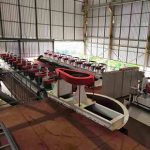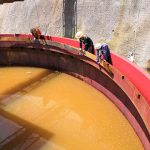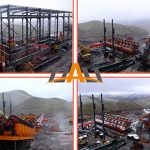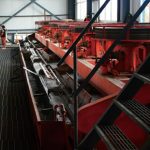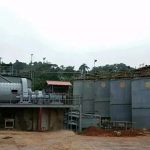Beginners’ Guide to Cut and Fill Mining Method
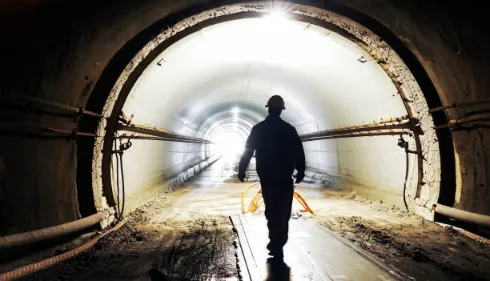
Introduction to Cut and Fill Mining
Cut and fill mining is a common underground method. It is mostly used when ore bodies are not regular in shape or when the rock around is not very strong. The idea is easy to follow. Miners dig out the ore in slices (“cut”). Then, they put waste or other filling material back into the empty space (“fill”) to make the ground safe again.
People like this method because it is safe, flexible, and very selective. For new learners, it is a simple way to see how underground mining mixes digging, carrying, and backfilling to get valuable minerals.
What is Cut and Fill Mining?
Cut and fill mining is a subsurface method where workers take out ore in horizontal layers. Later, they fill the empty space with waste rock, tailings, or special mix. This goes on again and again, slice by slice. That is why we call it “cut” and then “fill.”
The main point is simple. The hole you make must be filled again to keep the roof and walls safe. This lowers the chance of falling rock. In real work, both the digging team and the filling team must work closely. That is why teamwork is very important in this method.
How the Cut and Fill Mining Method Works
Step by Step Process
Ore Excavation (Cutting): First, a slice of ore is drilled and blasted. Then LHDs (Load Haul Dump machines) pick up the broken rock. Each slice is often 2 to 5 meters thick, but this can change based on the ore and the ground.
Ore Haulage: After mucking, the ore is moved to ore passes, underground trucks, or belt conveyors. If this step is slow, the whole system slows down.
Backfilling (Filling): Waste rock, hydraulic fill, or paste fill is put back into the hole. Many modern mines like cemented paste fill because it makes the ground stronger and uses tailings, which is better for the environment.
Cycle Repetition: Once the fill is hard, the miners go to the next level above and do the same again. Over time, the mine looks like stacked filled rooms.
Overhand vs. Underhand Cut and Fill
Overhand Cut and Fill: Work begins at the bottom and moves upward. This is safer in weak rock, as miners stand on the filled ground. It is the most popular choice.
Underhand Cut and Fill: Work starts at the top and goes downward. It is used less often, but it helps when the rock above is strong and the rock below is weaker. Gravity also helps move ore down in this style.
Equipment Used in Cut and Fill Mining
Primary Excavation Equipment
Drill Jumbos: These drill many holes for blasting. Modern ones can make several holes at the same time, which saves time.
Explosives and Blasting Systems: Blasts break ore into pieces. Timing and order of the blasts are very important for safety.
LHD Machines: These small, low trucks scoop up muck in narrow spaces and move it to ore passes or trucks.
Filling and Transport Equipment
Underground Trucks: These carry large loads of ore to crushers or shafts. They are built low to fit small tunnels.
Conveyors and Ore Passes: These help move ore from one level to another with less manual work.
Backfill Systems: Hydraulic fill pumps a sand water mix. Paste fill systems deliver thick mixes that turn hard and give extra support.
Safety and Support Systems
Shotcrete Sprayers: Spray concrete on tunnel walls to stop small falls.
Rock Bolting Rigs: Bolt weak rock to keep it from moving. Bolts often work with wire mesh and shotcrete.
Ventilation Fans: Push fresh air in, take out bad gas, and help keep tunnels cool.
Advantages of Cut and Fill Mining
Selective Mining
Best for ore bodies that are thin or irregular.
Miners can choose rich zones and leave poor rock behind.
Less waste goes to the mill, so ore quality stays high.
Enhanced Safety
Filled areas give workers a flat and safe floor.
The roof is supported by the fill, so the chance of cave in is lower.
Safer for workers compared to large empty stopes.
Flexibility
Works even if the ore body changes in size or shape.
Can adjust to new ground conditions.
Good for places where other mining styles cannot work.
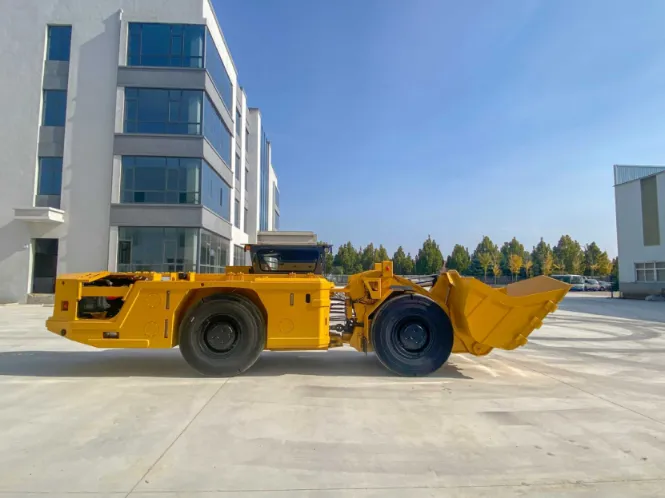
Disadvantages and Challenges
Higher Costs
Filling every slice needs more workers, gear, and time.
It costs more than bulk methods like sublevel stoping or block caving.
Dependence on Fill Material
Mining stops if fill supply runs out.
Bringing fill underground takes planning and adds extra work.
Slower Production Rates
Each slice is mined step by step.
This makes it slower, so it works best for rich ore where quality matters more than speed.
Real World Applications of Cut and Fill Mining
Typical Ore Bodies
Thin, steep veins where miners need to be very careful.
High value ores like gold, silver, copper, and zinc, where recovery must be high.
Industries and Regions
Used in Canadian gold mines with irregular ore bodies.
Common in silver mines in South America where too much waste is not allowed.
Also used in South African mines where safety and rock strength are key.
Cut and Fill vs Other Mining Methods
Room and Pillar: Works for flat ore bodies but leaves pillars, which lowers recovery.
Sublevel Stoping: Faster and cheaper for big ore bodies but not selective.
Block Caving: Cheap for huge ore zones but needs long setup and only works in regular deposits.
Cut and fill is slower and more costly but safer and more flexible.
Safety Considerations for Beginners
Ground Support: Keep checking rock safety. Use bolts, mesh, and shotcrete often.
Ventilation: Move fresh air in. Remove dust, fumes, and gases like methane.
Water Control: Pumps keep tunnels dry and lower water pressure.
Emergency Preparedness: Escape ways, rescue teams, and safe rooms must always be ready.
About Qixia Dali
Qixia Dali Mining Machinery Co., Ltd, founded in 1998 in Yantai, specializes in underground mining equipment including LHDs, underground trucks, and utility vehicles. With over 200 employees, 90 of them engineers, the company integrates design, production, installation, and training. Its equipment, certified for safety and quality, is widely used in more than 80 countries and supports hundreds of mining projects. Recognized as a high tech and specialized enterprise in Shandong Province, Qixia Dali also provides EPCM services, focusing on innovation, large scale solutions, and customer first service.
Conclusion
For beginners, cut and fill mining is one of the easiest underground methods to follow. It focuses on safety, selectivity, and good ore recovery. That is why it is chosen for tough ground or rich deposits.
Even if it costs more and takes more time, the method gives strong support and better ore quality. For anyone new to mining, learning cut and fill helps build a base to understand how digging, filling, gear, and safety all fit together in underground mining.
FAQ Section
Q1: What is the main purpose of backfilling in cut and fill mining?
Backfilling makes the mine safe by replacing ore with waste or special fill, so the ground stays strong.
Q2: Is cut and fill mining more expensive than open pit mining?
Yes. It costs more because of filling and because the pace is slower.
Q3: Which type of ore body is best suited for cut and fill mining?
Thin, irregular, or steep ore bodies with high grades are most suited.
Q4: What safety measures are essential in cut and fill operations?
Support for rock, fresh air systems, dust control, water pumping, and escape plans are all needed.
Q5:Where to get trustworthy underground mining equipment
Contact Qixia Dali for professional equipment and innovative solutions.
About Us
Qixia Dali Mining Machinery Co., Ltd was established in 1998, located in Yantai City.
The company is mainly engaged in the design, development, production, installation and training of underground mine equipment and ore processing equipment, spare parts supply and sales.
MoreContact Us
- Xinbang Rd, Private Economy Park, Qixia, Shandong Province, China
- +86 135 5307 3459
- ytdali@ytdali.com
 +86 13553073459
+86 13553073459
+86 13553073459
+86 13553073459
